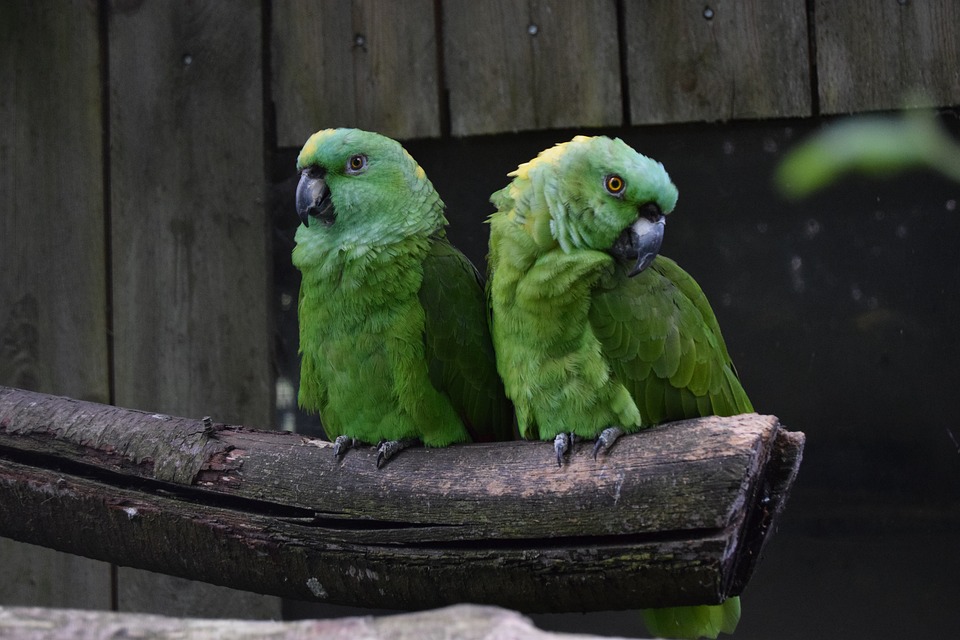Parrots are known for their vibrant colors, intelligence, and playful nature. One intriguing aspect of parrot behavior is their ability to form strong bonds with their mates. In this article, we will delve into the fascinating world of parrot bonding, exploring how these intelligent birds form and maintain lifelong partnerships.
Parrot bonding refers to the deep emotional connection that parrots form with their mates. It is an essential aspect of their lives, contributing to their social well-being and overall happiness. There are different types of parrot bonds, including pair bonds, flock bonds, and human bonds.
Pair bonds are the strongest and most common type of bond among parrots. These bonds are formed between two parrots who choose each other as lifelong mates. Pair-bonded parrots engage in various behaviors to solidify their bond, such as mutual grooming, nesting, and raising young together.
Flock bonds, on the other hand, are formed within a larger group of parrots. While not as strong as pair bonds, flock bonds are still important for social interaction and protection within the group. Parrots in flock bonds often engage in activities such as flying together, foraging, and vocalizing.
Parrots also have the ability to form bonds with their human caregivers. This human bond is built on trust, regular interaction, and positive reinforcement. Parrots can develop strong attachments to their human companions, often seeking their attention and forming a bond similar to the pair bond they have with their mate.
Mates play a crucial role in a parrot’s life. The emotional connection that forms between mates is deep and profound. Parrots in pair bonds often display signs of distress when separated from their mate, demonstrating the strength of their bond. Pair bonds also contribute to a parrot’s social well-being, as they provide companionship, support, and a sense of belonging within their flock.
Communication is another important aspect of parrot bonding. Mates often engage in vocalizations, body language, and mutual grooming to communicate their affection and strengthen their bond. Understanding these communication signals can help parrot owners better understand and nurture the bond between their feathered companions.
The process of mate bonding begins with courtship rituals, where parrots engage in elaborate displays to attract a mate. These rituals may include dancing, vocalizing, and showing off their vibrant plumage. Once a pair bond is formed, mutual grooming becomes a crucial behavior to strengthen the bond. Mates will groom each other’s feathers, showing trust and affection.
Nesting and raising young together also play a significant role in mate bonding. Parrots in pair bonds will work together to build a nest, incubate eggs, and raise their offspring. This shared responsibility further solidifies their bond and strengthens their connection.
To maintain a strong bond, regular interaction and quality time are essential. Parrot owners should spend time with their birds daily, engaging in activities such as talking, playing, and training. Enrichment activities, such as providing toys and puzzles, can also help strengthen the bond between mates.
Positive reinforcement is another effective strategy for maintaining a strong bond. Rewarding desirable behaviors with treats or praise reinforces the bond and encourages positive interactions between mates.
However, there can be challenges in parrot bonding. Jealousy and aggression may arise between bonded parrots, especially if they perceive a threat to their mate. Separation anxiety is also a common issue when separating bonded parrots. Proper introduction and gradual separation can help prevent these issues.
Parrots can also form bonds with their human caregivers. Building trust, providing regular interaction, and using positive reinforcement can help foster a strong bond between parrots and humans.
In conclusion, understanding parrot behavior and the process of mate bonding is crucial for providing optimal care for these intelligent and social birds. By recognizing the importance of pair bonds, learning about courtship rituals, and implementing strategies to maintain a strong bond, parrot owners can ensure the well-being and happiness of their feathered companions.









